Mitinori Saitou
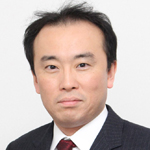 | Mitinori Saitou received his M.D. and Ph.D. (under Shoichiro Tsukita) in the Kyoto University, performed his postdoctoral work in the Gurdon Institute (with Azim Surani), and was team leader at the RIKEN Center for Developmental Biology (currently RIKEN BDR). Mitinori Saitou is now Professor at the Kyoto University Institute for Advanced Study and Director of the Institute for the Advanced Study of Human Biology. His work focuses on the mechanism and in vitro reconstitution of germ cell development in mice, non-human primates, and humans. |
Michael Helmrath
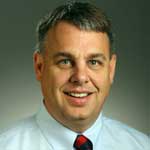 | As a pediatric surgeon scientist, Dr. Helmrath has established a large multidisciplinary team dedicated to clinical, translational, and basic science research focused on human diseases. Clinically, he is dedicated to patients with intestinal diseases and obesity. In his laboratory, he focuses on characterizing intestinal stem cells during intestinal adaptation and developing intestinal regenerative strategies. By combining his current roles as Director of Surgical Research and Director of Clinical Translation for the Center for Stem Cell & Organoid Medicine (CuSTOM), his strong basic science research background further allows him to translate human GI conditions to the laboratory to develop highly innovative approaches to treat intestinal diseases. |
Meritxell Huch
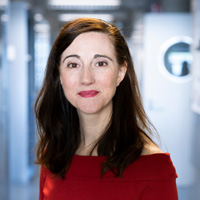 | Dr Meritxell Huch is a Director and Scientific Member at the Max Planck Institute of Molecular Cell Biology and Genetics, in Dresden (Germany). She obtained her PhD at the Center for Genomic Regulation-CRG in Barcelona, Spain in 2007 and moved to the Netherlands at the Hubrecht Institute, for her postdoc. There, she pioneered the generation of organoids for non-intestinal tissues including stomach, liver and pancreas. Following this work, in 2014 she obtained an independent position at the Gurdon Institute, University of Cambridge, where her lab established the first human liver organoid models derived from both healthy and diseased human liver tissue. By combining both organoid and animal models, her lab has made significant contributions on the understanding of molecular and cellular mechanisms of tissue regeneration and disease. For that, in 2019, she was awarded the prestigious Lise Meitner Award from the Max Planck Society and moved to the MPI-CBG in Dresden. In May 2022, she was elected Director and Scientific member of the Max Planck Society to continue her research on tissue regeneration, organoids and cancer. For her sustained research and achievements, she has received several awards including the Hamdan Award for Medical Excellence, The Women in Cell Science Prize from the British society, the EMBO young investigator award, the BINDER prize and, recently, the highest recognition for a stem cell scientist in Germany, the Hilde Mangold Award from the German Stem Cell Network. |
Prisca Liberali
 | CANCELLED |
Kyle Loh
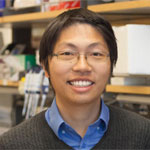 | Kyle Loh is an Assistant Professor and The Anthony DiGenova Endowed Faculty Scholar at Stanford University. His group has mapped how 20+ different human cell-types emerge from pluripotent stem cells, ranging from blood to brain to blood vessels. He is a Packard Fellow, Pew Scholar, Human Frontier Science Program Young Investigator and Baxter Faculty Scholar, and has received the NIH Director’s Early Independence Award DP5 and Forbes 30 Under 30. |
Sasha Mendjan
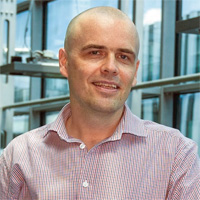 | Sasha Mendjan is a group leader at the Institute for Molecular Biotechnology in Vienna (IMBA), elucidating human heart development & disease mechanisms. Sasha has been trained in genetics and biochemistry at the Ludwig Maximillian University in Munich and obtained his Ph.D. at the EMBL & University of Heidelberg, working on chromosomal regulation of transcription. During his postdoc, he developed a comprehensive differentiation system from human pluripotent stem cells into major mesoderm lineages, enabling the dissection of the underlying specification principles. Based on these insights, Sasha’s group established a new generation of self-organizing cardiac organoids (cardioids), mimicking the chamber-like architecture and all the different embryonic compartments of the human heart. The Mendjan team is developing this system further to address one of the most significant bottlenecks in biomedical research today – the lack of physiological models of the human heart. |
Mitsuru Morimoto
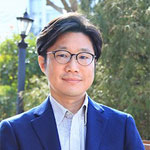 | Mitsuru Morimoto is Team Leader of the Laboratory for Lung Development and Regeneration at the RIKEN Center for Biosystems Dynamics Research (BDR), in Japan. He has trained as a developmental biologist with a focus on mouse organogenesis. His lab focuses on identifying analogies in cell signaling among development, regeneration and diseases of the respiratory system using mouse genetics and in vitro culture for multicellular systems such as organoids. By understating molecular bases of developmental biology, his lab is attempting to control tissue stem cells at adult and establish a protocol to reconstruct pulmonary tissues from human ESCs/iPSCs. He has been recognized with numerous honors including The Young Scientists’ Prize of the Commendation for Science and Technology by the Minister of Education, Culture, Sports, Science and Technology in 2014, and KAO Science Award, The KAO Foundation for Art and Science in 2019. |
Keiko Muguruma
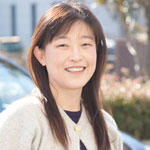 | Keiko Muguruma received the degree of Ph.D. in Pharmacy from Osaka University, Japan in 1998. She did his post-doctoral work on early embryonic development with a focus on axon guidance in the laboratory of Professor Fujio Murakami at Osaka University as a Research Scientist at Core Research Program for Evolutional Science and Technology for Japan Science and Technology (CREST/JST). In 2003, she joined in the laboratory of Dr. Yohiki Sasai at the RIKEN CDB (currently RIKEN BDR) in Kobe, Japan as a Research Specialist in 2003. At RIKEN she worked in the field of neural development and stem cell biology. She established 3D culture systems for in vitro construction of the cerebellum from human iPSCs, including generation of Purkinje cells from patient-derived iPSCs. She succeeded in construction of an in vitro disease model for spinocerebellar ataxia type 6 that recapitulates both ontogenesis and pathogenesis. In 2018, she was appointed to a professor at the Kansai Medical University. She is continuing work on the in vitro reconstitution of human embryonic development from pluripotent stem cells. Her aim is to understand the human brain and develop treatments for neurodegenerative diseases. |
Yasuhide Ohinata
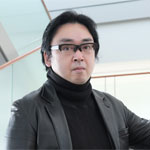 | Yasuhide Ohinata is a Junior Associate Professor at Advanced Research Departments, Graduate School of Medicine, Chiba University since 2019. He obtained his Ph.D. in 2003 from Tsukuba University, by studying identification and analysis of genes specifically expressed in testis. As a Postdoctoral fellow, he joined the laboratory of Dr. Mitinori Saitou in the RIKEN Center for Developmental Biology (CDB), Kobe, Japan and elucidated the signaling principle for primordial germ cell fate specification in mice [Ohinata, Payer, O’Carroll et al., Nature, 2005][Ohinata et al., Cell, 2009]. He was also appointed as a PRESTO/JST researcher during 2009-2014 and a researcher of the developmental genetics laboratory of Dr. Haruhiko Koseki in RIKEN Institute of Medical Sciences (IMS), Yokohama, Japan during 2014-2019. Furthermore, he also demonstrated recently that establishment of mouse primitive endoderm stem cells (PrESCs) can recapitulate the developmental potential, which will greatly facilitate elucidating the mechanisms of early embryonic development [Ohinata et al., Science, 2022]. He continues to strive on reconstituting artificial embryos with developmental potential using stem cells alone. |
José Polo
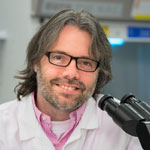 | Jose Maria Polo graduated from Buenos Aires University as a Biochemist. In 2008, Jose obtained his PhD working on lymphomagenesis at the Albert Einstein College of Medicine under the supervision of Professor Ari Melnick. He then moved to the Harvard Stem Cell Institute to work on nuclear reprogramming with Professor Konrad Hochedlinger. In 2011, Jose established his independent research group at Monash University, obtaining a Silvia and Charles Viertel Senior Medical Research Fellowship in 2014 and an ARC Future Fellowship in 2018 to continue his work in the epigenetic mechanism underpinning reprogramming and cell fate. In October 2021, Jose was recruited to the University of Adelaide as the inaugural Director of the Adelaide Centre for Epigenetics and Program leader of the South Australian Immunogenomics Cancer Institute. In Adelaide he will continue his work in epigenetics and its application to reprogramming, early embryogenesis and cancer. |
Emma Rawlins
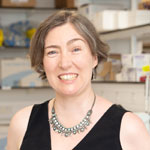 | Emma Rawlins obtained her PhD in developmental biology from the University of Edinburgh in 2002. She performed postdoctoral work with Prof Brigid Hogan at Duke University from 2004 – 2009 where she identified stem cell populations in the developing, homeostatic and repairing mouse lungs. In 2009 she started her lab at the Gurdon Institute, University of Cambridge and in 2020 was promoted to senior Group Leader. Emma is a member of the Department of Physiology, Development and Neuroscience. Her lab works on lung stem and progenitor cell biology, combining innovative human organoid models with mouse genetics. |
Hirohide Saito
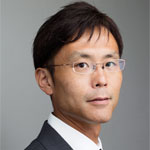 | Hirohide Saito is now Professor at Center for iPS Cell Research and Application (CiRA), Kyoto University. After completing predoctoral training at the University of Tokyo and SUNY Buffalo, he received his Ph.D. from the University of Tokyo in 2002. He joined at CiRA since 2011. He is interested in the field of mammalian synthetic biology & stem cell programming. Using newly developed RNA technologies, he aims to understand design principle of living systems and contribute to future medicine. |
Toshiro Sato
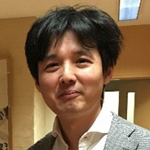 | Dr. Toshiro Sato is Professor of Department of Organoid Medicine in Keio University School of Medicine, Tokyo. He obtained his MD and PhD from Keio University School of Medicine and completed his residency program in Department of Gastroenterology, Keio University Hospital. In 2007, he joined the Hans Clevers lab, Hubrecht Institute, Utrecht to investigate intestinal stem cells, where he developed the organoid culture system for adult intestinal stem cells. Dr. Sato established his own laboratory in the Keio University since 2011 and focus on disease modeling of human gastrointestinal diseases. |
Koichi Takahashi
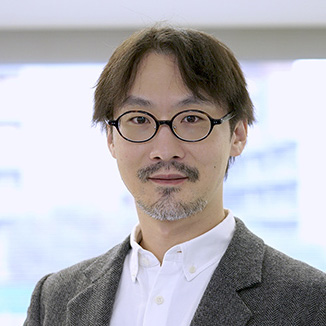 | Dr. Koichi Takahashi is a principal investigator at RIKEN Center for Biosystems Dynamics Research. He received his Ph.D. from Keio University in 2004. His research interests span all the areas at the interface between computing and biology, with some special emphasis on (1) laboratory automation, (2) biochemical network modeling and simulation, and (3) biologically inspired AI. He is the creator of the E-Cell System, the first genome-scale simulation software, and one of the founders of the E-Cell Project. He was involved in the development of the humanoid experimental robot called LabDroid Maholo when he was a Chief Information Officer (CIO) at Robotic Biology Institute, Inc. He is currently Project Leader of the JST-MIRAI ‘Robotic Biology’ Project. He is a project professor at Keio University Graduate School of Media and Governance, and an invited professor at Osaka University Graduate School of Frontier Biosciences. |
Minoru Takasato
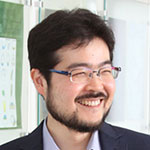 | Minoru Takasato is Team Leader of the Laboratory for Human Organogenesis at the RIKEN Center for Biosystems Dynamics Research (BDR), where he heads the kidney regeneration project. He received his BSc. in anthropology from the University of Tokyo, Japan in 2002, and completed his Ph.D. focusing on the study of mouse kidney development in the same university in 2008 before joining Professor Little’s laboratory as a postdoctoral fellow at Institute for Molecular Bioscience, University of Queensland in 2009 and Murdoch Children’s Research Institute, Australia, in 2015. He is an expert in the directed differentiation of human pluripotent stem cells to kidney with his most recent work being published in Nature Cell Biology (2014) and Nature (2015). He started his own laboratory at RIKEN CDB (currently BDR) from 2016. His most recent studies describe the generation of mini-kidneys from induced pluripotent stem cells for use in drug screening and disease modelling. His work has drawn a great deal of international interest in kidney development and stem cell research fields. |
Takanori Takebe
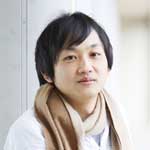 | Dr. Takebe is a Director of Commercial Innovation and Assistant Professor of Pediatrics at the Center for Stem Cell and Organoid Medicine (CuSTOM) at the Cincinnati Children’s Hospital Medical Center, USA. He is also a Professor at Tokyo Medical and Dental University, Japan. By recapitulating developmental principles, his lab utilizes human stem cells to self-organize into three-dimensional (3-D) structures reminiscent of human organs, so-called organoids with an ultimate goal of saving patients with no cure. |
Shoji Takeuchi
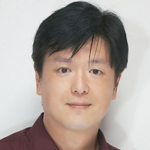 | Shoji Takeuchi received the B.E, M.E., and Dr. Eng. degrees in mechanical engineering from the University of Tokyo, Tokyo, Japan, in 1995, 1997, and 2000, respectively. He is currently a Professor in Department of Mechano-Informatics, Graduate School of Information Science and Technology, University of Tokyo. He has authored more than 190 peer-reviewed publications and filed over 70 patents. He has been recognized with numerous honors including Young Scientists' Prize, the Commendation for Science and Technology by the Minister of Education, Culture, Sports, Science and Technology in 2008, the JSPS prize from the Japan Society for the Promotion of Science in 2010, ACS Analytical Chemistry Young Innovator Awards in 2015, and UNESCO Netexplo Award Winner 2019. His current research interests include bioMEMS, 3D tissue fabrication, implantable devices, artificial lipid bilayer systems, and biohybrid machines. |
Satoshi Toda
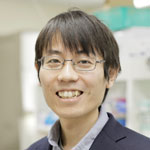 | Satoshi Toda is Assistant Professor of Nano Life Science Institute at Kanazawa University. He obtained his Ph.D. from Kyoto University Graduate School of Medicine in 2014 and worked in the Dr. Wendell Lim’s lab as a postdoctoral fellow at University of California San Francisco from 2015 to 2019. He is using synthetic biology approaches to understand and control the formation of multicellular structures. He is interested in mechanisms of self-organization and applications of engineered cells and tissues. |
Jim Wells
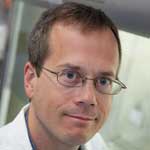 | Dr. Wells is an endowed professor of Pediatrics at the Cincinnati Children’s Hospital Medical Center in the Division of Developmental Biology. He is the Director for Basic Research in the Division of Endocrinology and is the Chief Scientific Officer of the Center for Stem Cell and Organoid Medicine (CuSTOM). |
Aaron Zorn
 | Aaron M. Zorn, PhD in an endowed Perinatal Professor at Cincinnati Children’s Hospital in the Division of Developmental Biology. He is the Director of the Center for Stem Cell and Organoid Medicine (CuSTOM) and the Associate Director of the Children’s Digestive Health Center. The goal of the Zorn Lab is to elucidate the molecular mechanisms controlling embryonic development the respiratory and digestive systems. Using a combination of animal models, cutting-edge genomics and human pluripotent stem cells the Zorn lab has made important contributions to our knowledge of the signaling pathways and gene regulatory networks governing endoderm organogenesis. This work informs our understanding of congenital diseases and the ability to generate human organoids for regenerative medicine. |
